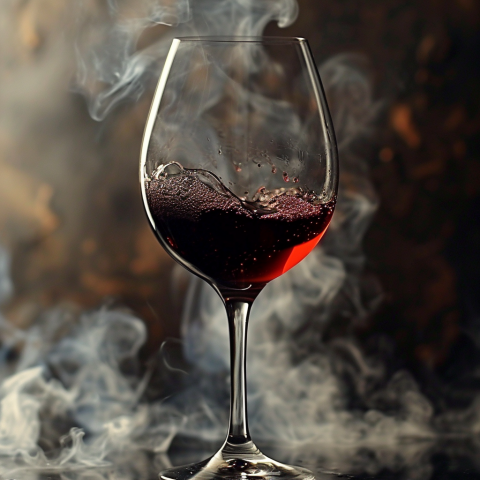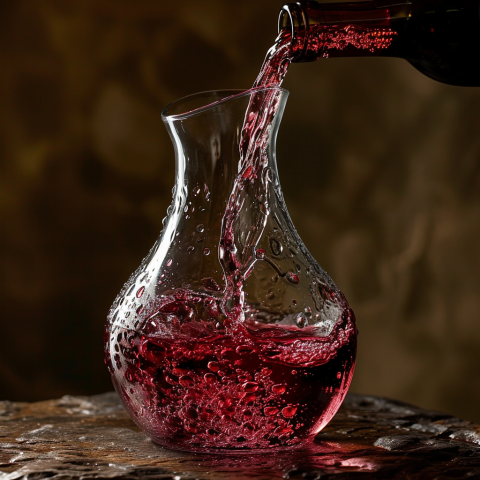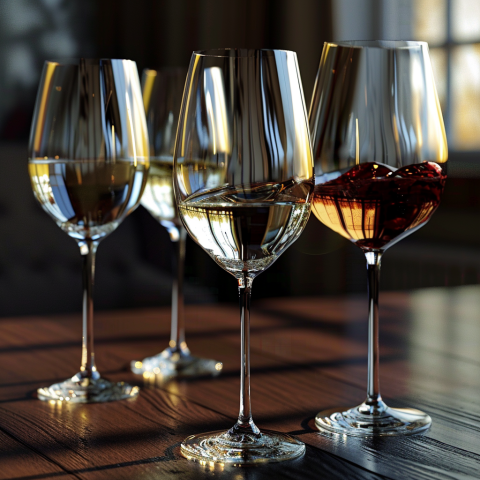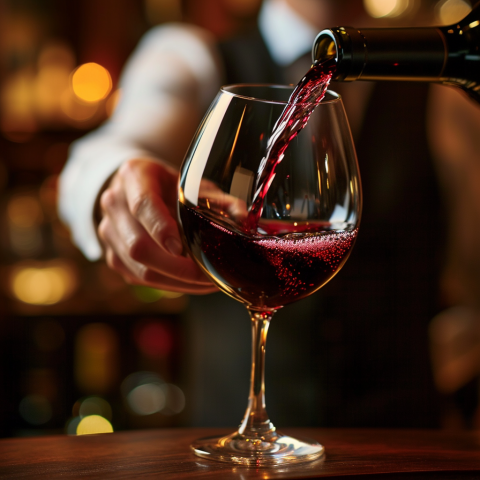How to be the perfect host, or what you should know about serving wine
Offering quality wine to visitors is certainly part of the alphabet of a good host, and of course most of us want to be that. However, quality wine also includes knowing how to serve it appropriately. Therefore, it is good to adopt a few principles. These include, for example, knowing what temperature the served wine should be, choosing glasses, opening the wine, decanting or topping up.
Temperature

Serving wine at the right temperature is a basic prerequisite for being able to perceive all its properties and clearly assess its quality. Sparkling wines and sweet white wines should be served at around 7°C, rosé and white wines at 9-12°C. Young red wines are best served at 12-16°C, while barrel-aged red wines are best served at 17-18°C.
Unkcork wine
This should be done cleanly and properly by first cutting open the capsule with a capsule cutter or a waiter's knife and then removing the capsule cap. Then clean the neck of the bottle with a clean cloth. When removing the stopper, be careful not to puncture it, so that fragments of the cork do not fall into the bottle. After opening the bottle, smell the cork and check its quality. If you smell cork, do not pour the wine. Open white and young red wines approximately 10 minutes before serving, mature red wines 30-60 minutes.
Decantation

Older wines should be decanted. Decantation is a process with a dual function. On the one hand, it serves to remove deposits that may have settled in the bottle. On the other hand, decanting aerates wine that has matured in the bottle for a long time. Decantation consists in pouring the wine into another glass container, the so-called decanter. When should you decant? Decanting is recommended when the wine has matured in the bottle for a long time (more than 5 years). If the wine is to be decanted in order to remove deposits or sediment, the entire contents of the bottle are not poured into the decanter. Leave a small amount of sediment in the bottle. Pouring the wine into a decanter is recommended an hour before drinking, so that it "opens", aerates and develops. It is poured into glasses directly from the decanter.
Selection of Wine glasses

"Enjoying" wine also includes choosing the right glasses. They should not have a volume smaller than 210 ml and should be filled to a third. The diameter of the opening should be smaller than the diameter of the widest part of the glass to properly channel the aromas. The stem of the cup should be tall and thin so that it is easy to hold. The glass should always be held by the stem to prevent the heat of the hand from raising the temperature of the wine. Still white wines are usually served in tulip-shaped glasses with a longer stem. Red wine glasses have a shorter stem and a spherical goblet with a larger volume compared to the glasses used to serve white wine.
What you should do when serving wine?

First, check whether the glasses that have not been used for a long time have any odor, and if necessary, rinse them and remove dust.
2. White and red wine glasses should be filled to a third, maximum to half. In glasses that are too full, the bouquet of the wine cannot develop and white wine in particular gets too warm. 3.When pouring, hold the bottle with the label facing up so that guests can see what they will be drinking. When pouring wine into glasses, hold the bottle by its lower part - the base. After you have tasted the wine, pour the wine to others, and finally to yourself.
4. Hold glasses with a stem by the stem so that they jingle when tapped.
5. Use the same glasses for a new bottle of the same wine, but always wait until the glass is completely empty before refilling.
6. Change glasses for another wine.
What you should never do:
1. When pouring, do not lean the bottle against the edge of the glass.
2. Never pour to the brim.
3. Guests should never refill their glasses themselves, the host is responsible for that.
4. Do not refill half-full glasses, current wine etiquette says that wine is only poured into empty glasses.
5. Never toast or drink with a full mouth.























